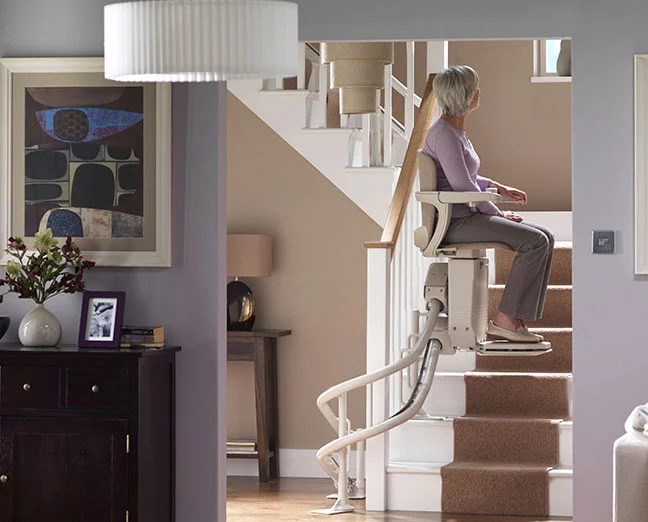Stairlifts from the council
Want to secure funding for a stairlift from your local council or housing association? Here's a guide on the steps you should take to initiate the process.
Arranging an assessment for a stairlift
To secure funding or provision of a stairlift from your local district council or housing association, you will need to initiate the process by contacting them and requesting an assessment. You can contact the authority where you pay your council tax or, if you’re a housing association tenant, call them directly for information on their available arrangements. Another option is to reach out to your local authority’s social services department and request an assessment, citing difficulty with using stairs as the reason. Keep in mind that assessments may be prioritized by urgency, so you may need to wait for a visit. You can inquire about the estimated wait time. According to a survey conducted in 2020, 10% of people who obtained a stairlift for themselves or a relative did so through the council, housing association, or an occupational therapist. Various brands were provided, including well-known companies such as Stannah and smaller ones like Thyssenkrupp

Funding your stairlift
When considering funding and obtaining a stairlift, it is important to note that arrangements may vary depending on your local area. In some areas, the district council may provide options to lease new or refurbished stairlifts, while others may have their own stock of second-hand units. In England, Wales, or Northern Ireland, you may be required to apply for a Disabled Facilities Grant (DFG), whereas in Scotland, a scheme of assistance may be available. The DFG maximum award is £30,000 in England, £36,000 in Wales, and £25,000 in Northern Ireland. The ownership of the property may also have an impact on the application process. If you have a private tenancy property, you will need to obtain permission from your landlord to proceed with a DFG application. If you are required to apply for a DFG, a financial assessment will be conducted, taking into account your income and savings. The review process may take longer due to this. Depending on your income, you may be awarded a full grant or a percentage towards the costs.
Your stairlift assessment visit
An occupational therapist (OT) will typically conduct the assessment. The therapist will evaluate and make recommendations on the most suitable equipment or adaptations, including a stairlift, to meet your needs. During the assessment, they will ask questions about your abilities and mobility, as well as any medical conditions that may affect you in the future. The therapist will also take into account the number of people living in the property and ensure their safety in case a stairlift is installed. The OT will discuss your current and future needs to ensure that their recommendations align with them. It’s important to keep in mind that although a stairlift may seem like the best option, it may not be feasible for your home or medical condition. The OT will strive to identify the most appropriate solutions for you. If the therapist determines that a stairlift is the best option, they will also advise you on funding options.
How long will you wait?
The decision-making process for funding or providing a stairlift should not take longer than six months, and the installation or modification should be completed within a year following the decision. However, the timeline may vary depending on the local authority, so it’s advisable to check on the status of your application periodically.
Care of your stairlift
After receiving funding from a DFG for a stairlift, it will become your personal property, and you will typically be responsible for its servicing and repairs. It’s important to verify this, as it can incur additional costs. In some rare cases, the district council may cover maintenance expenses. If you live in an area where the council maintains a stock of second-hand stairlifts and one is suitable for your needs, you may be offered the option of obtaining it permanently or through a leasing arrangement. In these cases, the council will assume responsibility for repairs and maintenance.
Care of your stairlift
After receiving funding from a DFG for a stairlift, it will become your personal property, and you will typically be responsible for its servicing and repairs. It’s important to verify this, as it can incur additional costs. In some rare cases, the district council may cover maintenance expenses. If you live in an area where the council maintains a stock of second-hand stairlifts and one is suitable for your needs, you may be offered the option of obtaining it permanently or through a leasing arrangement. In these cases, the council will assume responsibility for repairs and maintenance.
Waiting times for private stairlifts
In contrast to the potentially lengthy process of obtaining a council-funded stairlift, the private market offers a more expedient experience. Companies such as Acorn claim to offer same-day appointments for initial assessments, and Age UK (Handicare) can do same-day installations if necessary. Stannah states that the wait time for an initial assessment is usually one to two days, but can be shorter. Custom stairlifts, such as curved ones, may take up to two weeks to manufacture, but this will be discussed during the initial assessment. The installation process typically takes a matter of hours.
